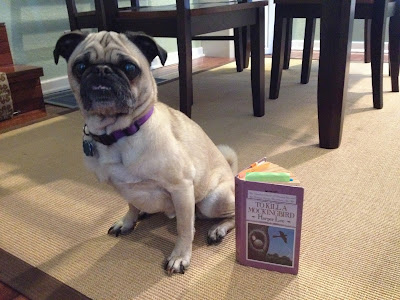Every year when the leaves fall from the trees, when I need to locate my scraper to remove frost from my windshield in the morning, when I need to clean the drawers and closets and replace the light summer shorts with jeans and the tank tops with sweaters, I also need to replace my candy summer reading to the more substantial, hearty meal novels. I love curling up with a great classic full of symbolism, diligently woven themes, and carefully crafted characters who experience epiphanies. My favorite hearty classic is still To Kill A Mockingbird by Harper Lee. Up until this year, every fall I handed out the purple covered coming of age gem. As students studied the front cover, and thumbed through the 280 pages, I smiled and couldn’t wait to feast on the substantial meal and once again join the Finch family in Maycomb, Alabama.
Monday, October 28, 2013
To Kill A Mockingbird - A Fall Feast
Every year when the leaves fall from the trees, when I need to locate my scraper to remove frost from my windshield in the morning, when I need to clean the drawers and closets and replace the light summer shorts with jeans and the tank tops with sweaters, I also need to replace my candy summer reading to the more substantial, hearty meal novels. I love curling up with a great classic full of symbolism, diligently woven themes, and carefully crafted characters who experience epiphanies. My favorite hearty classic is still To Kill A Mockingbird by Harper Lee. Up until this year, every fall I handed out the purple covered coming of age gem. As students studied the front cover, and thumbed through the 280 pages, I smiled and couldn’t wait to feast on the substantial meal and once again join the Finch family in Maycomb, Alabama.
Subscribe to:
Post Comments (Atom)


No comments:
Post a Comment